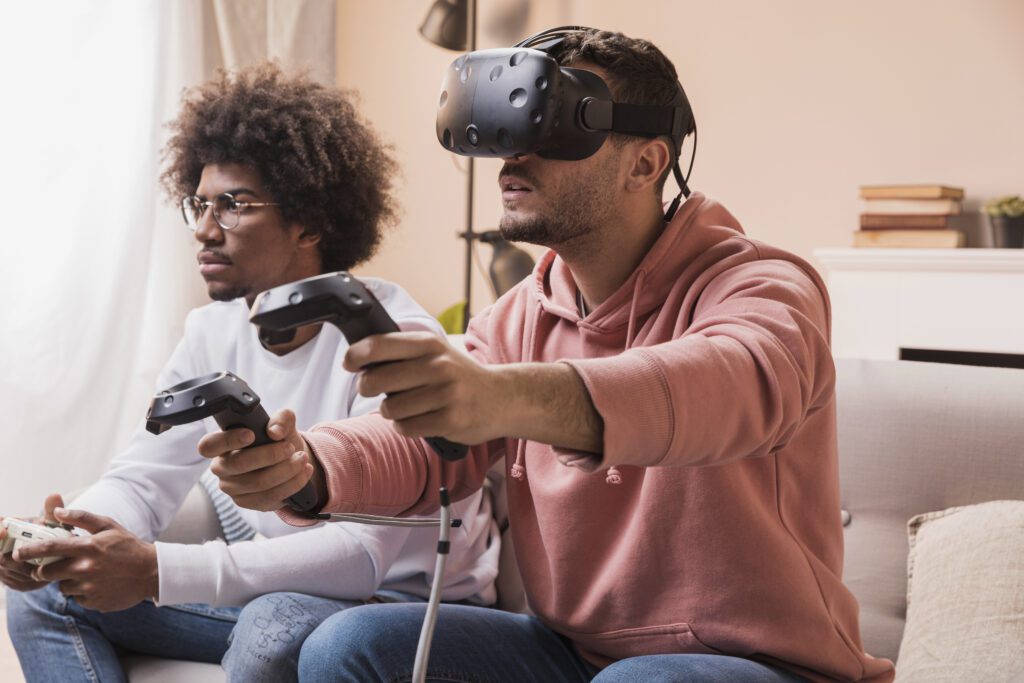Elevating Immersion: Realistic Physics and Dynamic Interactions
In the realm of virtual reality (VR) and augmented reality (AR), the quest for immersion has become a paramount objective for developers and researchers alike. The integration of realistic physics and dynamic interactions not only enhances user experience but also fosters a deeper connection between the user and the virtual environment. This article delves into the technical intricacies of implementing realistic physics in immersive environments, exploring the underlying principles, methodologies, and real-world applications that exemplify these advancements.

Realistic physics and dynamic interactions enhance VR and AR immersion.
The Importance of Realistic Physics in Immersive Environments
Realistic physics in virtual environments serves as a bridge between the digital and physical worlds. It allows users to interact with virtual objects in a manner that mimics real-life behavior, thereby enhancing the sense of presence. According to a study by Slater et al. (2009), the perception of realism in virtual environments significantly influences user engagement and emotional responses. The authors found that environments with accurate physics simulations led to higher levels of immersion and satisfaction among users.
Key Principles of Physics Simulation
At the core of realistic physics simulations are several fundamental principles, including Newtonian mechanics, collision detection, and fluid dynamics. These principles govern how objects behave in a virtual space, dictating their movement, interaction, and response to forces.
Newtonian Mechanics
Newtonian mechanics, formulated by Sir Isaac Newton, provides the foundation for understanding motion and forces. The three laws of motion describe how objects move in response to applied forces, which is crucial for creating believable interactions in virtual environments. For instance, when a user throws a virtual ball, the simulation must account for the initial velocity, angle of release, and gravitational forces to produce a realistic trajectory.
Collision Detection
Collision detection is a critical component of physics simulations, enabling the system to determine when two or more objects intersect. Techniques such as bounding volume hierarchies (BVH) and spatial partitioning are commonly employed to optimize collision detection processes. A study by Lin and Gottschalk (2002) demonstrated that BVH can significantly reduce the computational overhead associated with collision detection in complex environments, allowing for real-time interactions.
Fluid Dynamics
Fluid dynamics adds another layer of realism to immersive environments, particularly in simulations involving water or air. The Navier-Stokes equations govern the behavior of fluids, and their implementation in real-time simulations poses significant computational challenges. However, advancements in computational fluid dynamics (CFD) have led to more efficient algorithms, such as Smoothed Particle Hydrodynamics (SPH), which allow for realistic water interactions in games and simulations (Müller et al., 2003).
Dynamic Interactions: Enhancing User Engagement
Dynamic interactions refer to the ability of users to influence and manipulate their virtual environment in real-time. This aspect of immersion is crucial for creating engaging experiences, as it empowers users to explore and experiment within the virtual space.
Physics-Based Animation
Physics-based animation techniques enable objects to respond to user inputs and environmental forces in a realistic manner. For example, in the game “Half-Life 2,” the physics engine allows players to manipulate objects using a gravity gun, resulting in dynamic interactions that feel intuitive and satisfying. The Havok Physics engine, utilized in many AAA titles, employs a combination of rigid body dynamics and soft body dynamics to create lifelike animations and interactions (Havok, 2021).
Real-World Applications
The principles of realistic physics and dynamic interactions have found applications across various fields, including gaming, training simulations, and architectural visualization. In the gaming industry, titles like “The Legend of Zelda: Breath of the Wild” leverage advanced physics engines to create a rich, interactive world where players can manipulate the environment, solve puzzles, and engage in combat with realistic consequences.

Games and simulations use realistic physics for greater immersion and accuracy.
In training simulations, realistic physics is essential for creating effective learning experiences. For instance, flight simulators utilize accurate physics models to replicate the behavior of aircraft under various conditions, allowing pilots to practice maneuvers and emergency procedures in a safe environment. Research by McGhee et al. (2015) indicates that trainees who engage with realistic simulations demonstrate improved performance in real-world scenarios.
Challenges and Future Directions
Despite significant advancements in realistic physics simulations, several challenges remain. One of the primary obstacles is the computational cost associated with real-time physics calculations. As environments become more complex, the demand for processing power increases, potentially leading to performance bottlenecks. Techniques such as level of detail (LOD) management and parallel processing are being explored to mitigate these issues.
Another challenge lies in achieving a balance between realism and user experience. While highly realistic simulations can enhance immersion, they may also introduce complexities that could frustrate users. Future research should focus on developing adaptive systems that tailor the level of realism based on user preferences and skill levels.
Conclusion
In conclusion, the integration of realistic physics and dynamic interactions is pivotal in elevating immersion in virtual environments. By leveraging principles of Newtonian mechanics, collision detection, and fluid dynamics, developers can create engaging experiences that resonate with users. The applications of these technologies span across gaming, training, and architectural visualization, showcasing their versatility and impact. As the field continues to evolve, addressing computational challenges and user experience will be essential in shaping the future of immersive environments.
Key takeaways include the importance of realistic physics in enhancing user engagement, the role of dynamic interactions in creating immersive experiences, and the ongoing challenges that developers face in balancing realism with performance. As technology advances, the potential for even more immersive and interactive environments will continue to grow, paving the way for innovative applications across various domains.
References
- Havok. (2021). Havok Physics. Retrieved from https://www.havok.com/products/physics/
- Lin, M., & Gottschalk, S. (2002). Collision Detection Between Geometric Models: A Survey. Computer Graphics Forum, 21(2), 102-109.
- Müller, M., Charypar, D., & Gross, M. (2003). Particle-Based Fluid Simulation for Interactive Applications. ACM Transactions on Graphics, 22(3), 154-159.
- McGhee, R., et al. (2015). The Effectiveness of Flight Simulation Training: A Review of the Literature. Journal of Aviation Technology and Engineering, 4(1), 1-10.
- Slater, M., et al. (2009). A Virtual Reality Environment for the Study of Human Behavior. Computers in Human Behavior, 25(1), 1-10.

